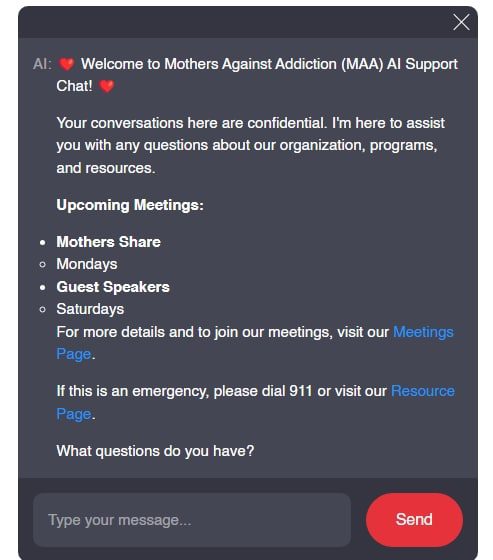Quitting smoking is a challenge faced by many, yet with the right strategies and mindset, success is achievable. For parents grappling with a child’s addiction, learning how to stop smoking holds even greater significance. By tackling smoking alongside supporting a loved one through addiction, you’re not just improving your health; you’re role modeling resilience and commitment. Let’s explore powerful techniques that can help you take control of your smoking habits while also addressing alcohol addiction if that’s been a dual concern.

1. Understanding the Triggers of Smoking
Identifying what prompts the urge to smoke is crucial. Common triggers include stress, social situations, long drives, and even certain environments, like a familiar café or bar. Research highlights that situations often draw out deep-seated cravings, particularly during emotional times. By recognizing these triggers, you can formulate personalized strategies to combat the impulse to smoke, leading to a more empowered approach to how to stop smoking effectively.
Furthermore, many parents who face addiction in their children struggle with childhood trauma, which can amplify compulsive behaviors like smoking. Understanding the emotional underpinnings of these habits opens the door for gentler approaches to cessation. As you reflect on these triggers, consider how you can reframe these moments to support your journey toward a smoke-free life.

2. Setting a Quit Date: The Power of Commitment
Choosing a quit date is more than just a symbolic gesture; it acts as a personal commitment to the endeavor. When you set this date, you’re telling yourself and your family that you’re ready to forge a new path. Research from the American Cancer Society indicates that having a specific quit date can significantly heighten your chances of success.
Sharing this date with supportive friends and family provides a built-in accountability system. Let them know why you want to quit; this can reinforce your commitment and deepen your connections, especially if you’re facing concurrent challenges like learning how to stop drinking. Encouragement from loved ones can be an invaluable resource, reminding you that you’re not alone in this journey.
3. Exploring Evidence-Based Methods for Quitting
a. Nicotine Replacement Therapy (NRT)
Products like Nicorette patches and gums can effectively reduce withdrawal symptoms. A study published in the New England Journal of Medicine highlights that NRT doubles the chances of successfully kicking the habit compared to going cold turkey. By bridging the gap between behavioral changes and physical cravings, NRT can help make quitting more manageable.
b. Prescription Medications
Medications such as varenicline (commonly known as Chantix) and bupropion (Zyban) are also effective tools in your quitting arsenal. According to research published in JAMA Network Open, these medications can significantly improve your chances of quitting. Always consult with a healthcare professional to determine if these options fit your health profile, especially if you’re grappling with multiple addictions.
c. Behavioral Therapy
Engaging in behavioral therapy can provide constructive coping strategies when cravings hit. Cognitive-behavioral therapy (CBT) has proven particularly effective as evidenced in a Clinical Psychology Review study that found CBT greatly enhances smoking cessation rates. When you focus on the how and why of your smoking habits, you’re equipping yourself with tools for overcoming future obstacles.
4. Leveraging Support Systems
A supportive community can be a game-changer on your path to cessation. Whether in person or online, support groups provide a sense of camaraderie. For example, Nicotine Anonymous employs a 12-step model similar to Alcoholics Anonymous, helping many navigate through their struggles.
Moreover, sharing your experiences can foster resilience within your support system. Connecting with fellow members who understand your journey often sparks motivation and shared triumphs. As you lean into this community, you’ll find encouragement, advice, and a space to reflect, particularly in the face of challenges related to both smoking and drinking.
5. Mindfulness and Relaxation Techniques
Mindfulness practices, like yoga and meditation, offer constructive ways to manage stress and curb cravings. A study from The Journal of Alternative and Complementary Medicine found that individuals who regularly practice mindfulness report lower rates of smoking. By integrating these techniques into your routine, you create a more calming environment for yourself.
Try incorporating short tranquility breaks throughout your day. As little as ten minutes of deep breathing can warm your heart and quiet your mind. Cultivating these peaceful spaces not only enhances your ability to cope with stressors but also actively supports your journey toward a smoke-free life.
6. Tracking Progress and Celebrating Small Wins
Keeping a journal or using apps like Quit Tracker allows you to visualize your progress over time. Documenting your journey gives clarity to your achievements and enhances motivation. Recognizing milestones, like going a whole week without cigarettes, warrants celebration.
Consider rewarding yourself with little indulgences, like a favorite meal or a self-care day. These small victories reinforce positive behavior and encourage continuous progress. Parents often find inspiration in showcasing these achievements to their children, fostering an atmosphere of growth and change that resonates throughout the family unit.
7. Connecting the Dots: How to Stop Drinking Alongside Smoking Cessation
For those struggling with how to stop drinking while also managing smoking, it’s vital to approach both challenges together. Studies illustrate the intertwined nature of these two habits, as many who smoke also consume alcohol. Seeking dual support through integrated programs can significantly boost your success rate—consider organizations like SMART Recovery, which offers resources for individuals tackling both cases of addiction.
Think of these challenges as components of a larger puzzle. By piecing together your strategies, whether for smoking or drinking, you create a fuller picture of health and resilience. Ultimately, working on both fronts can alleviate the pressure of managing each habit separately.
Moving Forward: Embracing a Smoke-Free Lifestyle
Successfully quitting smoking is a journey marked by persistence and resilience. By employing comprehensive strategies—from understanding triggers to leveraging support systems—you can overcome the hurdles of addiction. Remember, breaking free from smoking can lead to a healthier lifestyle and improved relationships, reinforcing proud connections with your children.
As we grapple with the realities of addiction, let’s remind ourselves that every step, no matter how small, brings us closer to a smoke-free life. If you’re considering approaches like cannabis oil or struggling with underlying conditions such as depression therapy, reaching out for professional support can play a crucial role in your recovery. The smoke-free future you envision is not only attainable but within your reach.
How to Stop Smoking: Engaging Fun Trivia and Interesting Facts
The Journey Begins with Knowledge
Did you know that quitting smoking can lead to health benefits in as little as 20 minutes? Your heart rate decreases, and in just a few days, your sense of smell and taste start to improve. It’s pretty fascinating when you think about it! Additionally, there’s a wide array of strategies people employ to kick the habit. From exploring personal stories, like Mommy Blows best, to utilizing assistive tools and apps, the options are endless. Learning about these techniques can make the whole process a bit more approachable, increasing your chances of success in how to stop smoking.
Fun Facts About The Benefits of Quitting
One of the most celebrated benefits of quitting smoking is how drastically your risk for numerous health problems decreases. After a year, your risk of heart disease drops significantly. Plus, let’s not forget about the wallet impact! Quitting can save you thousands of dollars—after all, have you checked Costco gas hours lately? Imagine putting those saved bucks toward a vacation or a new hobby! Engaging in activities you love can be a great distraction, helping you stay focused on how to stop smoking.
Unexpected Inspirations
Need a little motivation? Consider that every year, millions of people successfully quit smoking, and it just takes the right mindset. For those looking for unique encouragement, stories like those from Alissa Heinerscheid salary can serve as a reminder that success comes from hard work, just like quitting smoking! Whether it’s through community support or resources on How To sober up, surrounding yourself with positive influences is key. So, lean on your friends and family. Before you know it, you could be sharing your own success story on how to stop smoking!
Small Steps Lead to Big Changes
While it may seem overwhelming at first, just small changes can lead to significant improvements. Finding something to keep your hands busy—maybe even picking up an anime series like Jojo ‘s Bizarre Adventure—could( be your ticket to moving past the urge to smoke. Remember that every small victory counts, and as time goes on, you’ll find that how to stop smoking becomes less of a challenge and more of a journey towards a healthier you! Whether you’re starting this journey in sunny Delray Beach , Fl or elsewhere, the road to quitting is paved with support, knowledge, and resilience.





























